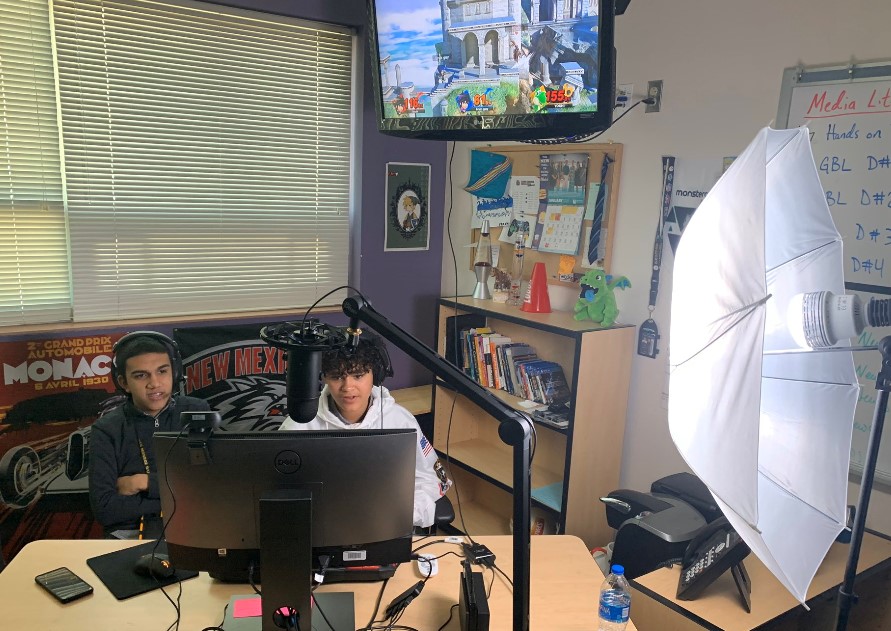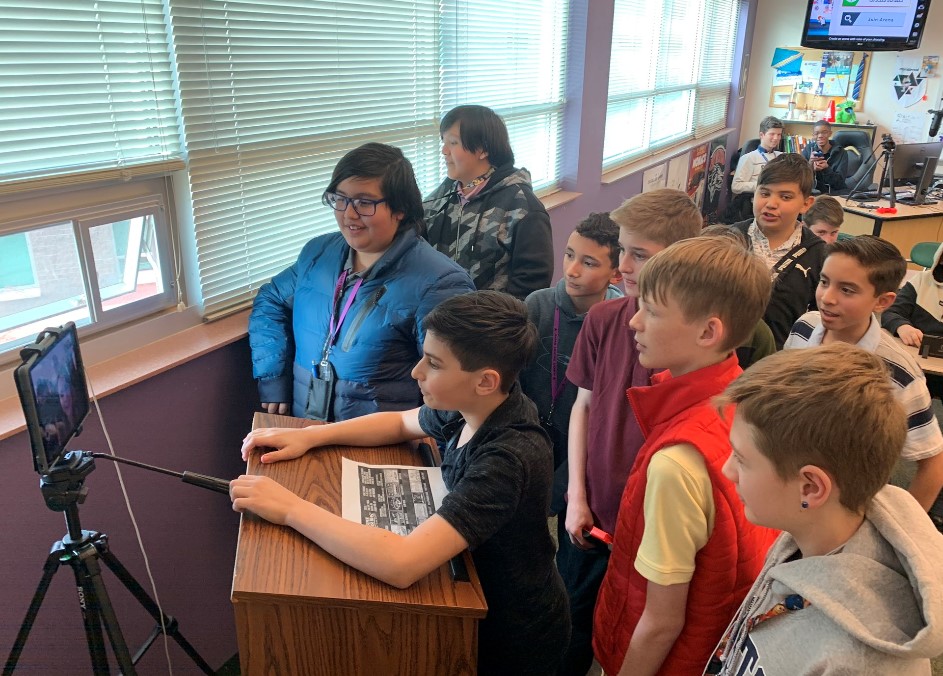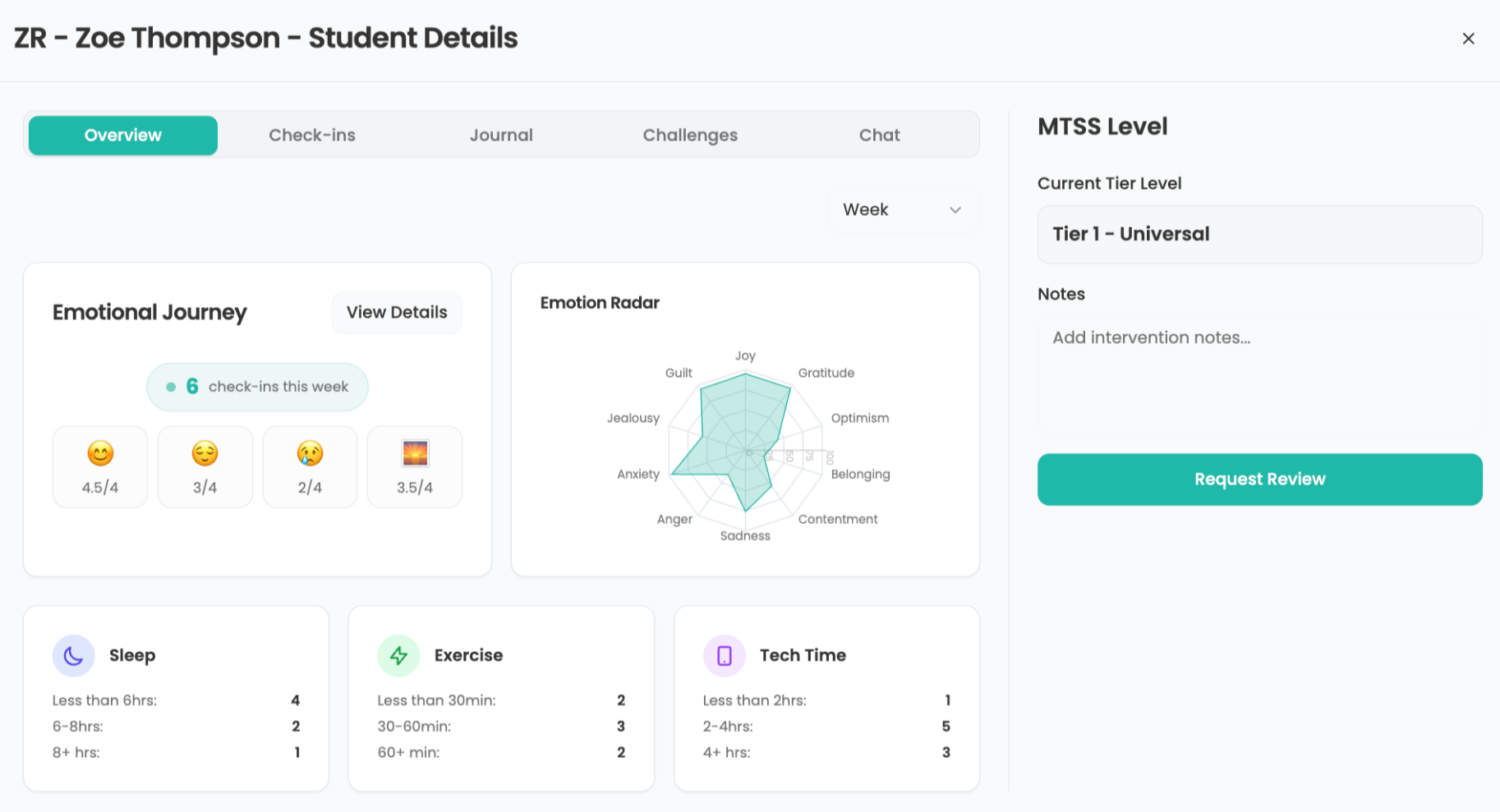5 Tips to Improve a Scholastic Esports Team
How to get your scholastic esports team to the next level

If you’re already in the scholastic esports space, you’ve found out how rewarding it can be for both you and your students. It’s likely, though, that you’ve had to do a lot of on-the-job learning as you tackle setting up an esports club, scheduling practice, and running tournaments.
Dr. Miles Harvey, NASEF Scholastic Fellow and teacher of Media Literacy at James Monroe Middle School in Ridgecrest, California, and his students boast an impressive record of 55-12 over the last two years in Rocket League. He offers his advice to help get your scholastic esports team to the next level.
Note: We refer to relationships in this piece as an educator/student relationship, but these tips can apply to other competitive esports environments outside of school clubs.
1. Create a virtual community for your students
Having a virtual community for your students or team is one of the most important things for you to do as an educator.
In gaming, communities are one of the most basic building blocks for players. Many games will offer in-game options for this, such as clans or guilds, but there is a need for a community outside of the game as well. Students want a space in which they can chat with one another, hang out, and yes, even share memes.
Virtual communities also help with things such as scheduling and creating new friendships, and are one of the best ways to communicate with students outside of school. I can guarantee you no student will be in a Google Classroom at seven o’clock, but you can be sure they’ll be on Discord and willing to talk with you.
Remember, gaming is a social experience that started as couch co-op long ago. While technology has moved us away from couch co-op in most cases, that social aspect has remained.
Tools and ideas to transform education. Sign up below.
If there isn’t a space created for students, you’ll see these students, who are often the ones who already feel underrepresented, retreat back into obscurity. Gaming and esports clubs allow these students to demonstrate their talents in ways schools have generally not championed.

2. Make sure you have more than just players
Esports orgs are more than just the players and esports clubs are exactly the same. Make sure you have students filling roles such as president, treasurer, graphic designer, shoutcaster, or any multitude of roles.
You’ll have to play to the strengths of the students who join your club. If someone is good at music, have them create intros and outros for your stream. Give them a microphone and some time to create custom sound effects for when a player gets a hat trick in Rocket League. If someone is good at writing, have them do the copy for tournament flyers or school announcements about the matches.
In doing this, you’ll allow these students to explore different opportunities within the space and develop unique skill sets that can be utilized both in and out of the scholastic esports environment. It is important to have your students rotate roles, though. Don’t worry, they’ll eventually gravitate to what really interests them, but you have to make sure they’re exposed to it first.
I’ve found that roles in esports clubs also give students a sense of purpose. It lets them know why they are there and that they are a valuable part of the team.
If you’re not sure of the roles students can have other than those listed above, here’s a quick list of possibilities: PR manager, social media poster, researcher (on other competitive teams), tournament coordinator, IT tech, video editor, chat moderator, interviewer, merchandise designer, and streamer.
3. Have a practice day that is separate from game day
Practice days are one of the most important things to ensure your team will improve. These allow your students to reflect on what they’ve learned and practice new techniques and strategies.
But why is it important to separate it from game day? A lot of it comes down to just not having enough time. When game day comes around there are a million things that need to be done by both you and your students. The stream needs to be set up, mics checked, attendance checked, you need to coordinate with the opposing team, graphics have to be loaded, and you have to let everyone know you’re playing. This is all before the match even starts.
If you and your students are practicing on a match day, many of those things can be overlooked or completely forgotten. Just as with traditional sports, you don’t do a full practice before a match. You have your athletes do a quick warm up just to get them in the zone. In esports, this can take many forms.
You can see in this example from the professional League of Legends scene. As noted, players will do this to get into the groove of hitting and dodging skill shots.
Two Korean League of Legends pros warm up before a match
4. Have a plan when you have your practice day
Some clubs will only have 45 minutes to meet while others may have a few hours, which means it’s important to make the most use out of your limited time.
I always come into the practice session with a plan. I’ll usually start us out with some sort of video on Rocket League that shows off a skill they may want to work on. After that, it’s on to reviewing some of their own game footage. Then it’s time for some structured play. Others may call this purposeful play. What this means is that your students are going into game time with a specific goal. It’s not to just play the game. They’re applying what they’ve learned in the review session to the current session.
This is no different from any standard basketball practice, for example. You’ll need to have some players work on the fundamentals, such as dribbling or free throws, and others need to work on moving the ball around the court. For Rocket League, that has taken the form of learning how to properly navigate the field in concert with your teammates. Too often I have seen our players nearly crash into one another while playing.
Don’t be intimidated if you aren’t as good or better than your students at the game in which you’re competing. I employ the same conceptual elements that I use to teach my class to break down the different aspects of Rocket League. It’s about managing your students and putting them in situations to grow.
Students often don’t realize it, but scholastic esports is one of the best ways to trick them into learning. They come to the club excited to learn something new about the game. It could be something such as how to angle your car in Rocket League from a specific spot to get a shot on the goal or how much damage a character in Super Smash Bros. Ultimate needs to take before they can be launched off the screen. Both of these examples use math and don’t elicit the usual complaints when you try to teach it.
Students like having a routine, so make sure you give them one. Do not waste their time or yours.
5. Promote your players, club, and stories on digital media
At the basic level, you need to buy into the esports club. To take it a step further, you need to be their champion.
It’s often said that gamers can smell b.s. from a mile away in the gaming space. Students are no different.
You need to be there for them on game day wearing the esports team jersey. You need to be the one to make sure the school announcements don’t forget the esports club and that their accomplishments are highlighted. You need to be telling the other staff about game days and get them to attend.
I like to think of Coach Klein in The Waterboy. He goes out of his way to champion Bobby Boucher and talks to his mother over dinner about being on the football team. That extra mile that you often see movie coaches take is one you may have to take. Parents can often be skeptical about the merits of esports, so it’s your job to go to them and explain why it’s good for their education.
While it seems like you give a lot, the students will give it back to you. When you don’t know how to do something, such as properly set up a Discord channel or block people from joining, your students will be there to teach you how to do it. They will back you up when you run into your own problems and go the extra mile to help you out. I like to think the relationship between students and teachers in esports clubs is closer to 50/50. Each of you will bring your own skills, experiences, and talents to the table that truly complement one another.
With these five tips, you can take your existing or new esports club to the next level.
